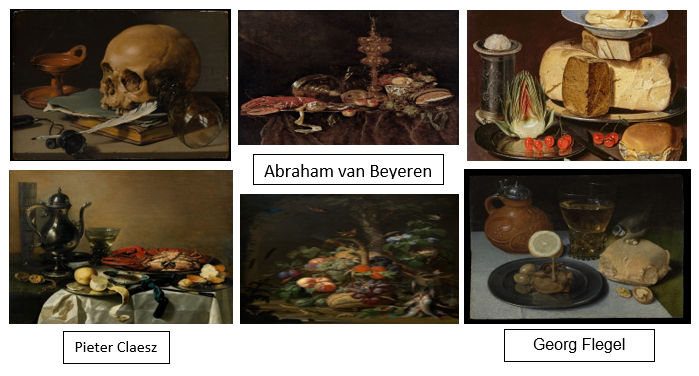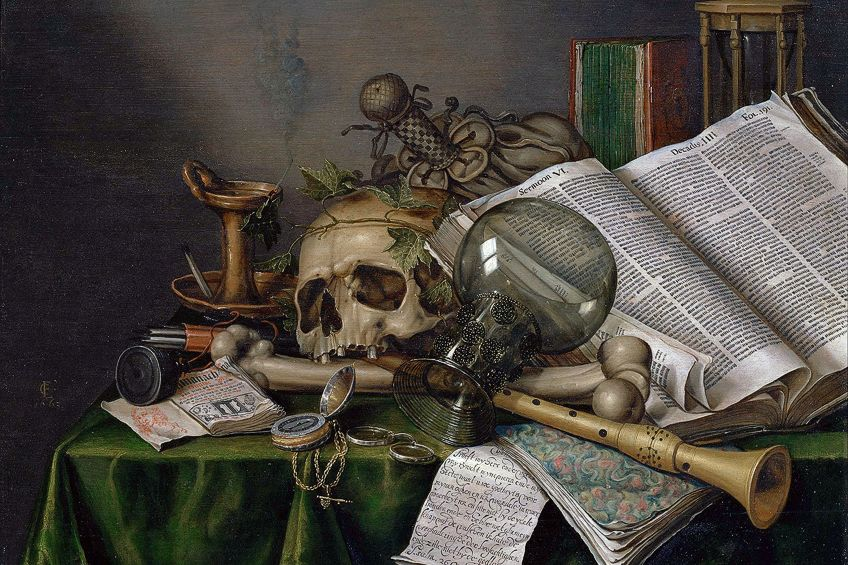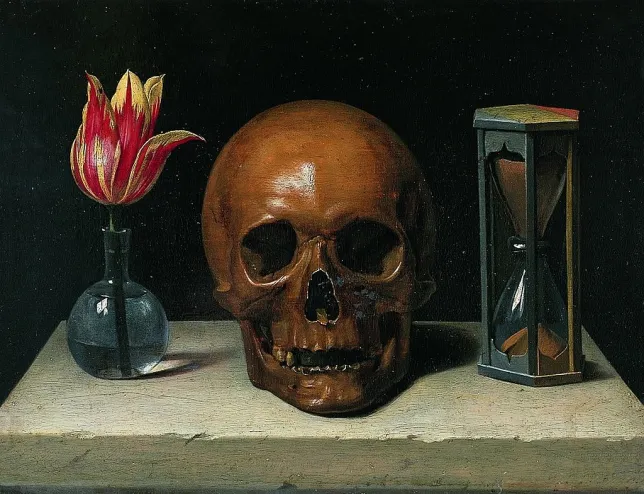Still life is a painting/ drawing of an arrangement of objects. These typically include fruits and flowers and other objects that contrast with those textures e.g. bowls and glassware. Still life pictures are often rich with symbolic depth and meaning. It first emerged as an independent genre in the early 1600s in Dutch and Northern European paintings.

Image analysis:
I think this photograph is interesting but also intimidating to look at due to the dark colours and skull, potentially symbolising death.

The various gold objects, book and guitar give me the impression that whoever owned these items was potentially rich and might have passed away (hence the random placement of the objects suggesting to me that the owner didn’t have time to arrange them properly). The objects being unorganised may also represent how we take for granted time and let things pile up until you realise you don’t have enough time to organise them and leave it for others to clean up. This idea can also be seen by the candle which has been blown out, implying the person who owned these objects time was up sooner than they expected.
I think the photograph was potentially taken in natural lighting coming from a window due to the light hitting the objects from the left in a non overbearing way. Most of the objects and table have a smooth like texture furthering the idea of wealth as it is like the objects are perfect and unflawed.
Overall, I like this photograph as I think it allows the person who’s viewing it to interpret it in their own way and come up with a story behind the picture and its meaning. The clarity and quality of the photograph is also very good.
Still Life photography Timeline:
Still-life art has existed from the 17th century until the modern-day, but in the 19th century, artists adopted photography as a new medium for still life art, to express their concepts in a novel format, and thus the still-life photo was born.
What is Vanitas?
Vanitas is a still life painting of a 17th-century Dutch genre containing symbols of death or change as a reminder of their inevitability.

What is Memento Mori?
Memento Mori is an artistic or symbolic trope acting as a reminder of the inevitability of death. It is a Latin phrase that translates to ‘remember you must die’.

Metaphors and symbols used in still life:
Many of the objects depicted in still life images are symbolic of some quality of the Virgin Mary or another religious figure (for example, the lily stands for purity), while other objects may remind the viewer of an edifying concept such as worldly vanity or temperance.
Some common symbols in Still Life paintings include:
- Fruit: Varying Symbolism In Still Life Paintings.
- Skulls: The Certainty Of Mortality.
- Candles: The Passing Of Time.
- Flowers: Symbols Of Life And Growth.
- Seashells: Birth, Purity, And Fertility.
- Mirrors: The Soul In Reflection.
- Insects: Transformation And Decay.
